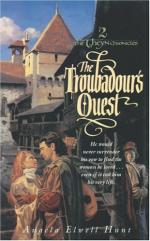|
This section contains 5,866 words (approx. 20 pages at 300 words per page) |

|
SOURCE: Burns, E. Jane. “The Man behind the Lady in Troubadour Lyric.” Romance Notes 25, no. 3 (spring 1985): 254-70.
In the following essay, Burns explores the irreconcilable roles played by the troubadour lady and the ambivalent poet-lover.
“La femme est fatalement suggestive; elle vit d'une autre vie que la sienne propre; elle vit spirituellement dans les imaginations qu'elle hante et qu'elle féconde.”
Charles Baudelaire, Les Paradis artificiels, dédicace
In a little-known essay of 1947, Dorothy Sayers speaks wistfully of the exceptional man who never treated the “opposite sex” either as “the women, God help us!” or “the ladies, God bless them.”1 These epithets will serve as the introduction for the following analysis because they highlight two issues of concern for the study of Occitan lyric: the role of the troubadours' Lady and the identity of the poetic voice through which her fictive persona is presented. Sayers's quotation illustrates a...
|
This section contains 5,866 words (approx. 20 pages at 300 words per page) |

|


